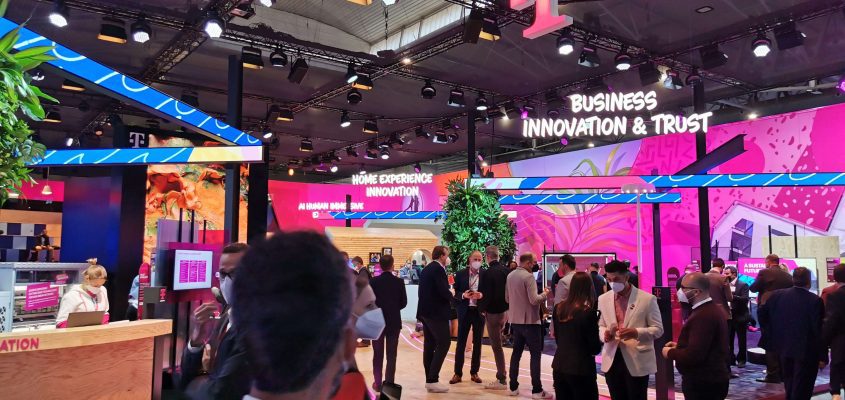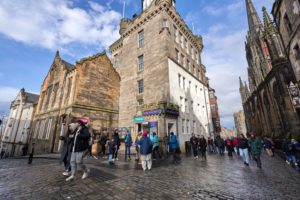Strategies To Improve Footfall At Your Events

Knowing how to increase footfall for an event you are exhibiting at will give you the best chance of achieving the goals and ambitions you have before you attend. The term footfall refers to the number of people who attend or pass by your booth, exhibition stand, or live activation space.
To help you understand more about what this is and why it is important, the team here at Exposure Analytics have put together this guide to highlight some strategies on how to increase footfall.
What is footfall?
Think of footfall like a headcount. It’s not a representation of leads or sales, as you still need to turn those heads around with your products and services, or whatever your exhibition stands have to offer. But it does give you an indication of the numbers of people for which you have the opportunity to do so.
So the chances of converting visitors into leads or customers are greatly increased by having strategies on how to increase footfall to your venue space. It will help you understand customer behaviour and the effectiveness of your marketing strategies.
Why is footfall data important?
Before discussing how to increase footfall, it’s useful to highlight further just why it is so important. If you’re not using footfall data to learn and adapt your strategy, it becomes just another number. It’s not really that useful to know how many people passed by or interacted with your stall if you don’t use that information to improve your approach at your next event.
A booth with 1000 visitors may seem successful, but say only 10 of those lead to a sale. In comparison, a booth with 100 visitors and 90 sales is a lot more successful in terms of ROI. The first booth has a lot more visitors but a conversion rate of 1%, whereas the other has a conversion rate of 90%.
This is why tracking how many people attend your events is only the beginning. Interpreting and acting on this information is what will bring you more success in future events. You want to know why people come and how they interact with your space.
Additional reasons why footfall matters include:
- Lead generation: A greater number of visitors usually means more opportunities to spark interest, start conversations, and generate valuable leads.
- Layout optimisation: Footfall insights help you understand which parts of your event space or exhibition stand are performing well, and which parts could be improved.
- Visitor behaviour: Analytics reveal when your space is busiest, how long people stay, and which features attract the most attention.
- Resource planning: By recognising patterns in visitor flow, you can better assign staff, allocate resources, and manage peak times effectively.
- Marketing impact: Comparing footfall data before, during, and after a campaign to gauge the success of your promotions.
For more information, you can check out our other blog – What Can You Learn From Visitor Analysis For Your Events?
Assessing your current event footfall
Before you can grow your footfall, you need to understand your current performance. Using tools like footfall counters, competitor benchmarking, and other analytics software can help track visitors accurately. Once you have a baseline, assess how elements like your stand design, event location, or the audience profile are affecting your numbers.
When thinking of how to increase footfall, consider tweaking elements of your event strategy. This could include offering a different type of demo, tailoring your message to a specific audience segment, or thinking of ways to make your exhibition stand out and be more immersive. Training any staff members you have to engage more effectively with attendees can also make a big difference to how people experience your space.
How can you measure footfall?
There are several methods for tracking how many people attend your event and how they move through the space. Here are some of the most commonly used techniques:
- Manual headcounts: For smaller-scale events, staff members could use handheld clickers to count attendees as they arrive. Alternatively, automated turnstiles can register each entry, though this approach is best suited to compact venues or simple setups.
- Wi-Fi tracking: Many event organisers now use Wi-Fi tracking tools to anonymously monitor visitor numbers. When attendees connect to the event’s Wi-Fi or enter a zone covered by sensors, their smartphones can be detected without compromising personal data. This can reveal patterns such as first time visits against repeat visits, and length of stay.
- Bluetooth and beacon systems: This works much the same as Wi-Fi tracking does, but it relies on Bluetooth signals instead. Beacons detect Bluetooth-enabled devices and can provide more precise location based insights. They’re an ideal tool for how to increase footfall and for triggering location-based content.
- CCTV and video analytics: Surveillance cameras equipped with analytical software can monitor movement and count visitors with more accuracy than manual methods. Some advanced systems can also offer demographic breakdowns. It’s important to stay compliant with privacy and data protection laws when using this technology.
- Facial recognition: Some systems use facial recognition software to count visitors and gather insights such as estimated age and gender.
- Radio Frequency Identification (RFID) tracking: RFID chips are embedded in badges, wristbands or tickets and track attendees as they move through different areas. This is frequently used at larger exhibitions and conferences. It gives you a clear picture of attendance, dwell times, and session participation.
Event tracking technology
Exhibition tracking technology is used to monitor and examine how visitors move and interact with your event stand. It can also highlight the areas that get the most amount of interest or engagement. Data like this can act as a vital element of your overall event marketing plan and help to improve your visitor experience, event stand layout and design.
The benefits of using event tracking technology
- Live data insights: Monitor visitor activity in real time so you can respond immediately.
- Better understanding of audience engagement: See how attendees interact with your space and features.
- Stronger ROI tracking: Measure the true impact of your presence at events.
- Smarter use of budget: Identify areas where you can save without sacrificing results.
- Data-driven planning: Use insights to make informed decisions for future events.
- More efficient resource allocation: Deploy staff and materials where they’re most effective.
- Personalised visitor experiences: Tailor interactions based on visitor behaviour and interests.
- Improved safety and crowd management: Track attendance and flow for safer, smoother events.
- Accurate, actionable reporting: Present clear data to assess what worked and where to improve.
Tracking sensors show you how to increase footfall
We are very proud to boast our own specialised and proven method of measuring and improving footfall for your event space. This involves using three specific sensors that gather data-driven insights and measure your booth’s performance.
Apex Monitor: The Apex sensor counts how many people enter and exit your designated event space. This helps you to track overall footfall and monitor occupancy levels throughout the day. These insights reveal which elements of your setup are drawing attention and those that may need adjusting.
EX Sensor: Rather than tracking individuals directly, EX Sensors detect Wi-Fi-enabled devices that are connected to the event’s network. This allows you to measure visitor numbers, dwell times, popular zones, and levels of engagement with your stand.
People Coordinates: This tool maps out the exact movements of attendees within your space. People Coordinates shows how people interact with your layout, giving you the chance to tweak your approach on the fly and make data-informed decisions as the event unfolds.
Dashboard: Access all your live data remotely through a central Dashboard. It doesn’t matter if you’re actually at the event or working off-site. You can log in to monitor insights, react to audience behaviour in real time, and use the findings to shape future event strategies, anywhere on the go.
What insights can be gained from events?
Visitor flow and movement patterns
By analysing where people go and which areas attract the most attention, you can fine tune the layout of your event space. Managing the flow of foot traffic helps avoid bottlenecks and ensures visitors move smoothly through your space.
Time spent and high interest zones
See which parts of your stand or which sessions are holding people’s attention. Tracking how long attendees spend in specific areas highlights what’s working. This helps you position key features more effectively and allocate your team and resources where they’ll make the most impact. This will ultimately boost your ROI.
Lead generation and conversion data
Understanding how many attendees go from being browsers to genuine leads is key. These metrics help you evaluate how successful your stand is at engaging visitors and converting interest into action. With this information, you can sharpen future marketing or branding efforts and increase your return on investment.
Use of space and capacity
Get a clear picture of how well your event space is being utilised. Combining this with footfall data helps you avoid overcrowded hotspots or underused areas. Balanced use of space creates a better visitor experience and increases the potential for meaningful interactions.
Queue and wait time monitoring
Like traffic and crowd flow, queue management data pinpoints where delays occur. Knowing where lines form lets you make improvements to service points or layout, helping to reduce frustration and keep visitors engaged and moving.
Audience profiling
Access anonymised demographic information to better understand your attendees. Insights into interests, age brackets, or behaviours allow you to tailor content and interactions to suit different audience segments. This makes your event space more relevant and engaging.
Social engagement tracking
It’s not just what people do at the event, it’s what they say about it and how they interact with it online. Monitoring social media mentions and interactions helps you gauge overall sentiment, identify trending topics or influencers, and understand the wider impact of your event marketing.
Proactive things you can do to increase footfall at events
Create a compelling exhibition stand experience
Make your stand inviting and memorable by focusing on engagement. Use product demos, live activities, or immersive tech like AR and VR to bring your brand to life. Sensory features such as lighting, sound, or even scent can influence mood and help create a unique atmosphere to encourage visitors to stay longer.
Use social media to drive foot traffic
Targeted digital campaigns can boost visibility before and during the event. Promote your stand with countdowns, behind-the-scenes previews, or competitions to generate interest. Posting live updates and responding to attendee interactions can also build a sense of connection and community. Use your platforms not just to advertise but to start conversations that make people want to visit you in person.
Provide interactive demos or experiences
People are more likely to stop if they can get hands on with whatever you have to offer. Demonstrations, live trials, or interactive games let attendees engage directly with your brand. These experiences are not only more memorable but also increase dwell time and provide a natural way to start a conversation.
Bring in touchscreens and digital displays
Modernise your stand with tech that lets visitors browse information at their own pace. Touchscreens can host videos, product details, or sign-up forms, offering a smooth and engaging alternative to leaflets. They also help you stand out in a sea of more traditional setups.
Find out how to increase footfall at your next events with Exposure Analytics
The team here at Exposure Analytics can help you gain a solid understanding of the footfall across your stand or event, and help you improve your performance in the events left to come on your calendar.
Visit our FAQ page for more information, call us on 0203 982 0997, or visit our contact page and leave us a message. One of our friendly team members will get back to you as soon as we can.


